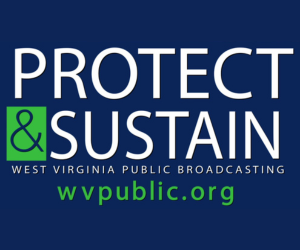The holiday season is coming to an end, but some of its leftovers – like boxes and Christmas trees – are still hanging around. Amy White is the director of sustainability at Marshall University, and she spoke to reporter Chris Schulz about conscientious ways of cleaning up after the festivities, as well as some green tips for next year.
This interview has been edited for length and clarity.
Schulz: So let’s establish a baseline. What is sustainability?
White: Sustainability actually has three pillars. I think everyone thinks of the environmental pillar, and that is true. We need to protect our resources. But also there is a fiscal responsibility pillar, so we have to have a strong, healthy economy. And then the people pillar. So we need to think about the people around us and do what’s good for everyone involved.
Schulz: What are some sustainability concerns that you see around the holiday?
White: There is a lot of concern, now that online shopping has increased so much, you have increased packaging. You have shipping across the country, sometimes across the world. And so that’s something that we do need to think about, as far as carbon footprint and the added packaging and resources that it takes to get the gift to you.
But another important thing to think about is shopping locally. Anytime you buy something online that you could have purchased locally, you’re actually putting a dent in your local economy. And we can’t truly be sustainable unless we have a strong local economy. Also, if you shop locally, if you go to your locally owned stores, mom and pop shops, that kind of thing, you’re reducing that carbon footprint. One thing definitely of concern is, think when you’re shopping for Christmas presents, about how this gift is going to impact your local economy and the environment as well,
Schulz: When we’re talking about sustainability as it relates to maybe returns or the disposal of old items around the holidays. What are some things that people need to keep in mind?
White: So if you’re going to return an item and you have to send it back through the mail, you can take it to certain drop off locations, like the UPS store, and they will actually wait until they have a large box all going back to the same place before they ship. If you just send it back yourself, that is just more travel time, more carbon footprint, more packaging that doesn’t need to happen.
As far as getting rid of an item that maybe a gift is replacing, look to see if it’s a recyclable product and take it to an appropriate recycling center and a lot of places like Goodwill, where you can take your appliances or your electronics for electronics recycling. You may also want to reach out to your local Solid Waste Authority. Every county has one, and a lot of times right after Christmas, they will do electronics recycling drives.
Schulz: There’s been a lot of discussion in recent years about the lack of real recycling infrastructure. But I’ve also recently been hearing more about the lack of infrastructure around returns. At best, they end up in a warehouse for resale, in no way sorted or anything. At worst, they go straight to the landfill. Is that an issue that your office is aware of?
White: Yes, that is something that we’ve been looking into. I know there are some bin stores that you can go to that buy the pallets from Amazon and resell those items. But yeah, a lot of times when you return an item, it goes directly into the garbage. If you feel the need to send it back, do it responsibly by, like I said earlier, going to the UPS store so things are packaged in bulk and sent. But if you don’t need to send it back, or it isn’t something that you know that could be used locally, please consider donating the item to a thrift store, or a shelter, some place where it can be used instead of thrown into the garbage.
Schulz: What about local resale pages on Facebook, for example, or “buy nothing” groups?
White: That’s another great way to get rid of things, just in general, around your house, instead of throwing them away. And also selling them online at a discounted price. eBay is certainly an option, then again, you’re shipping It’s difficult to get away from a lot of the carbon impact from shipping. But if you’re doing something locally, like donating to a local shelter, or you’re using the Facebook donation sites, then that is the perfect way to do it.
I think the best thing to think about all year round is just stick local. If you can shop local, do returns local, donate local, you’re going to have a huge impact on the economy and the environment and people, if you’re donating items to some place that are actually going to give them to people in need
Schulz: Where does your office stand on the issue of Christmas trees, both live and artificial?
White: I think that either can be an option, depending on how you go about it. As far as real Christmas trees go, there are several ways to purchase those. You can buy live Christmas trees with the roots still attached, and plant them after Christmas. If you buy a pre-cut live Christmas tree, you can always send it to a composting center. You can have it ground up for mulch, or you can take it to the DEP, and they will actually use those trees in lakes as fish environment, which is a great way to get rid of them. So as long as they’re disposed of properly, I don’t think that real trees are an issue at all.
I tend to try to stay away from plastic. However, if you do keep the tree over 10 years, there’s research that shows that you’ve offset your carbon. I just don’t know how many people would keep the artificial tree for more than 10 years. Also, again, I know this loops back and I sound like a broken record, but think about where that plastic tree was made and what kind of conditions it was made under. There’s so much that goes into every decision to be made.
Schulz: Is there anything that I haven’t given you a chance to discuss with me?
White: Christmas lights. Switching your current Christmas lights to LED lights. LED lights use 80% less energy. Also, on your outside lights, you can buy outdoor lights that come with small solar panels so that you’re not using any energy from an outlet. Those are both great alternatives to traditional Christmas lights that can be pretty hard hitting when it comes to energy consumption.






















